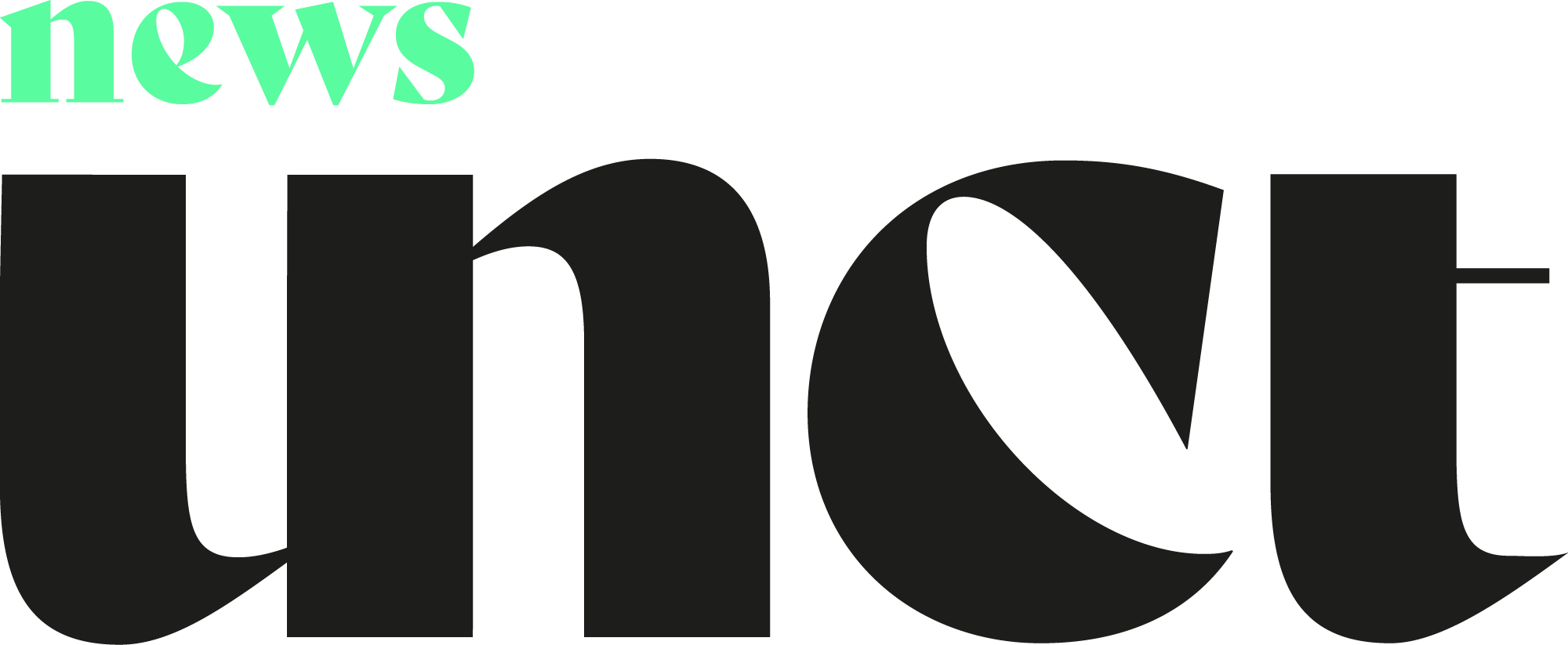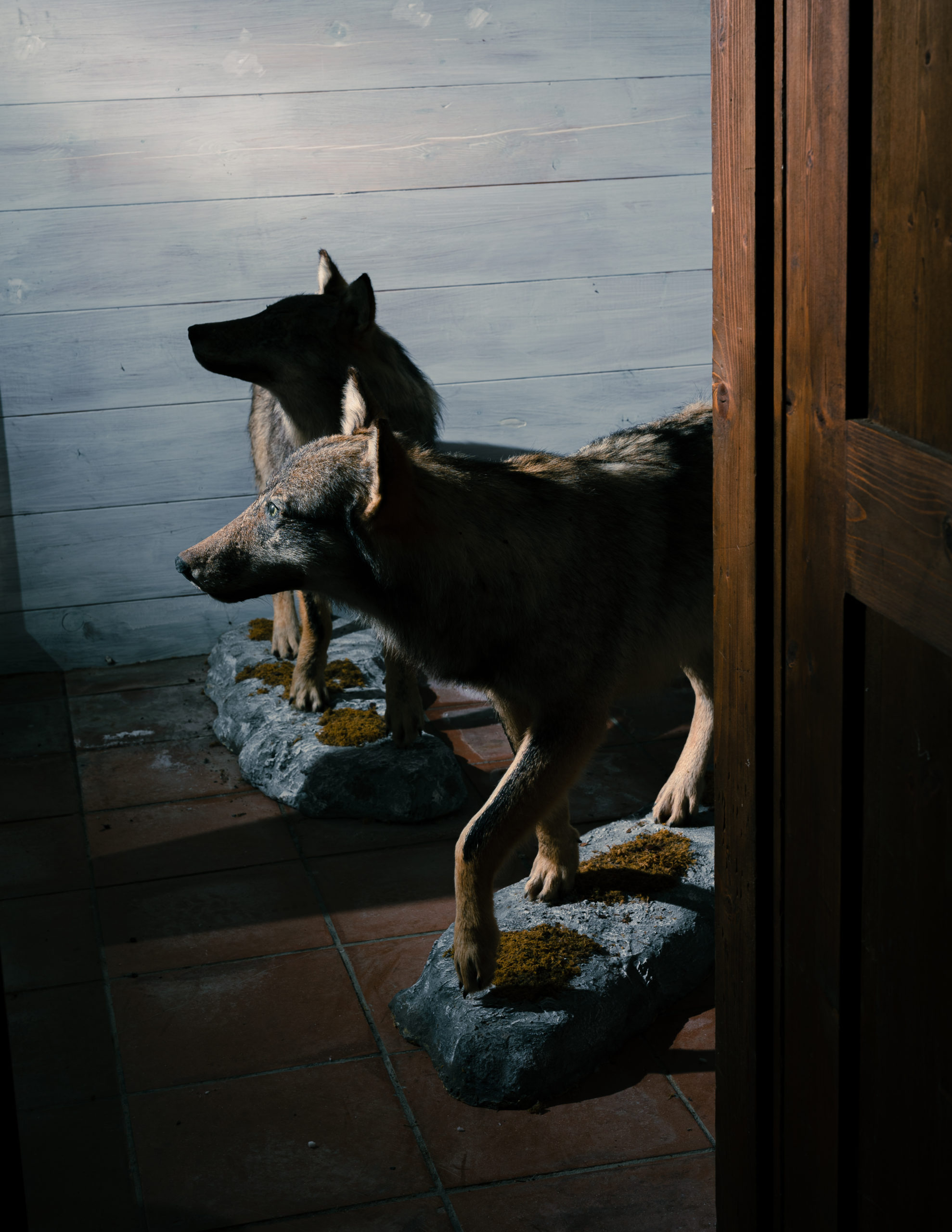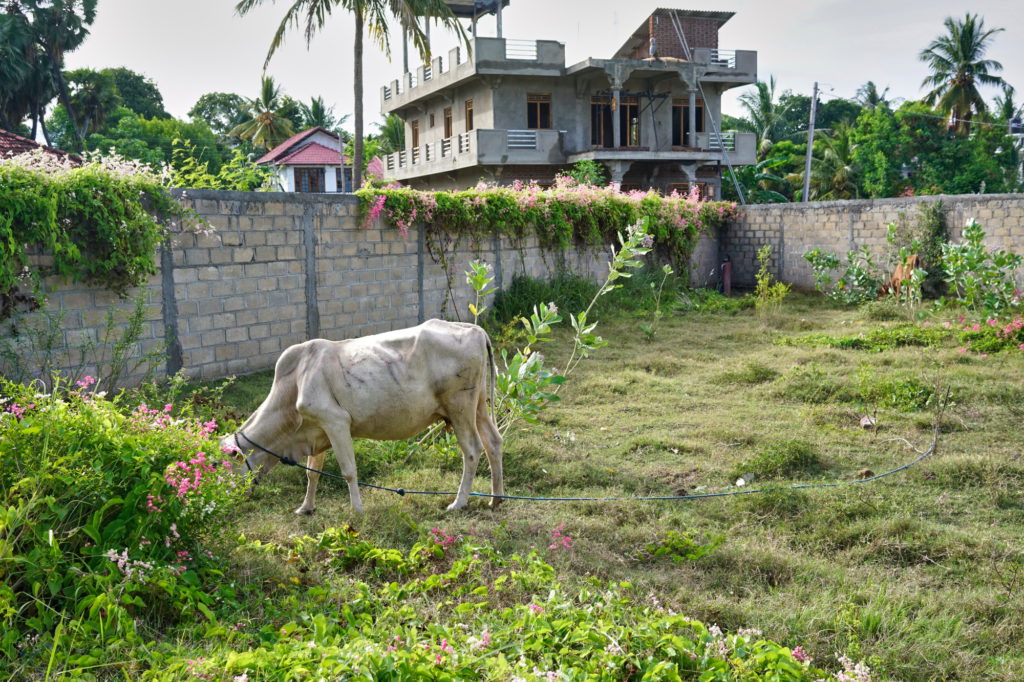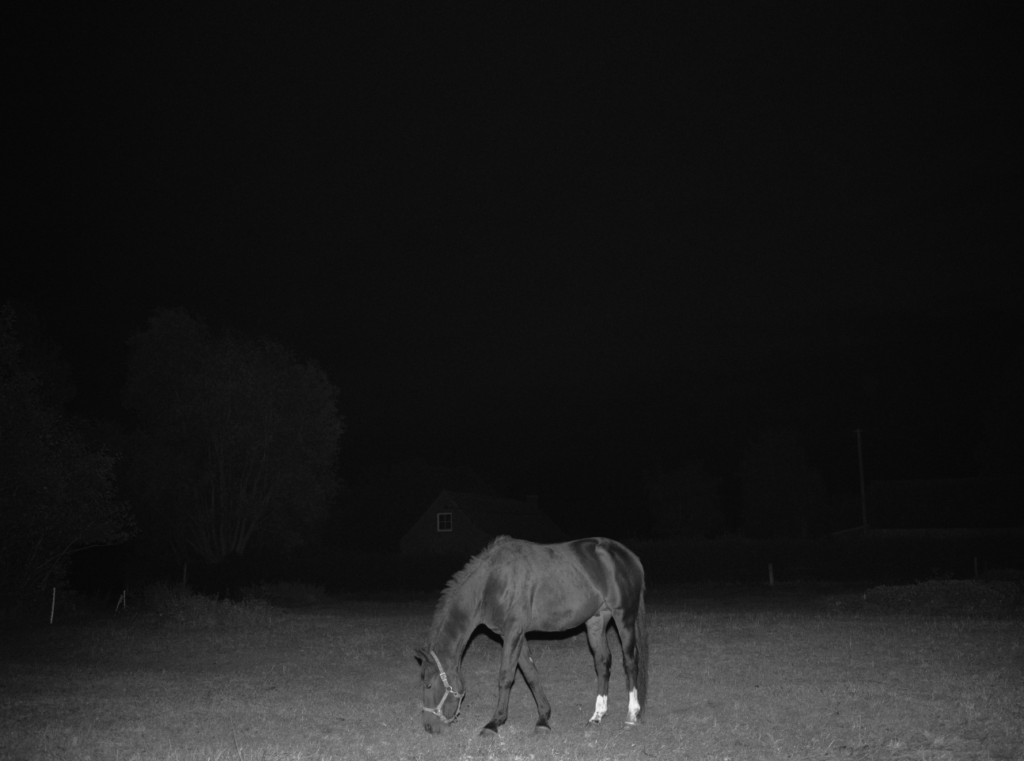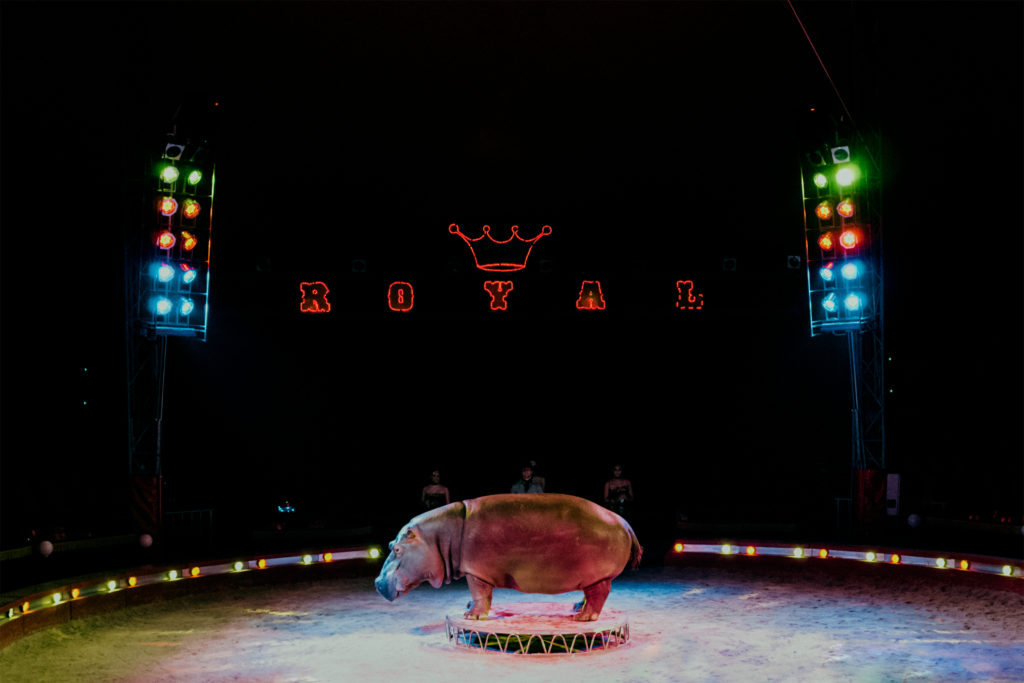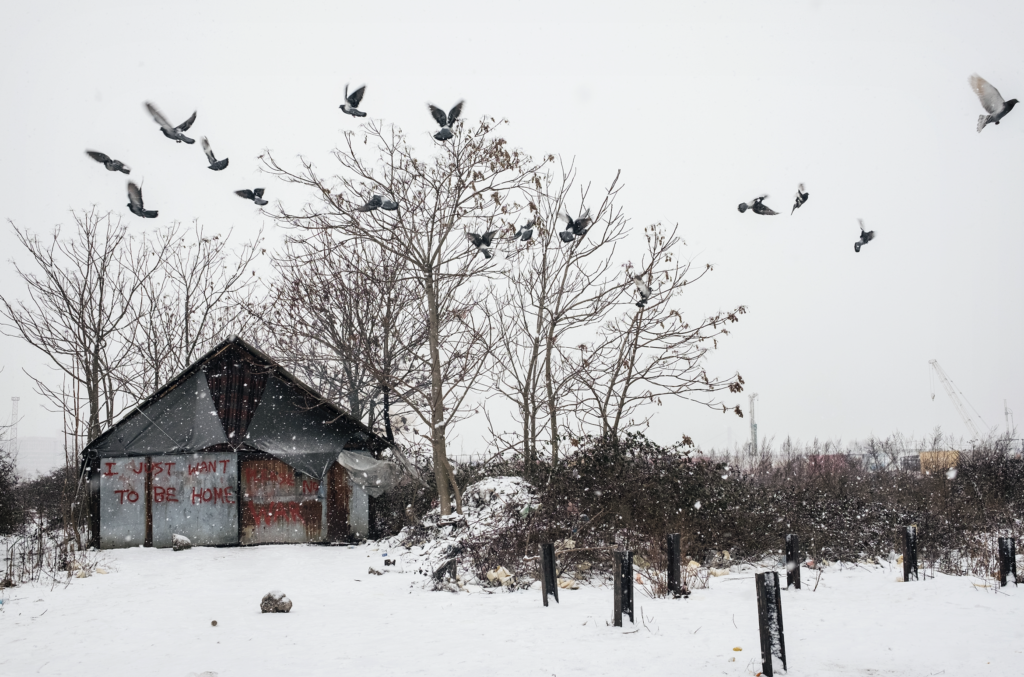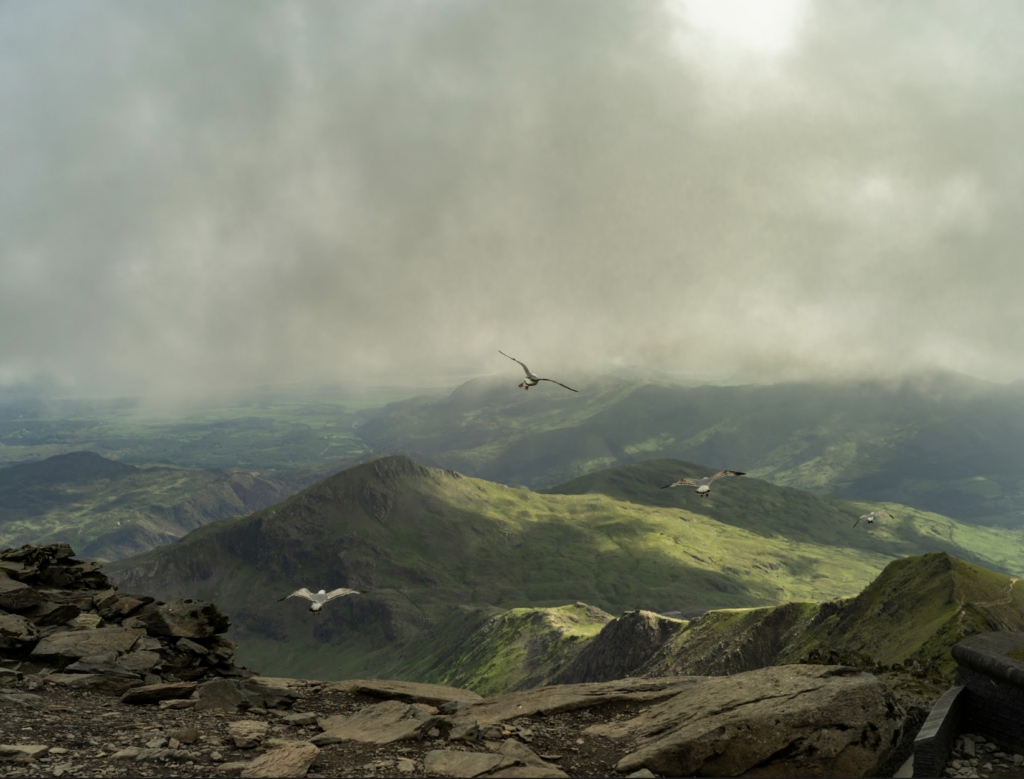Nature photography is so much more than capturing the natural world: it is really about the subtle art, of situating yourself within the natural world, fusing with it, and becoming a part of it before a twig crunches under your foot and you disrupt the scene. It is about blending into a surrounding that we have always been a part of, despite our collective sense of alienation from the natural world. It is about capturing intimate and transient moments, within the natural world, before those that inhabit it, sense they are being watched and change into something completely new.
Artists Alessio Pellicoro, Alfonso Briceño, Francesco Pistilli, Iacapo Pasqui, Kai Yokoyama, Luca Santini and Mohamed Hassan do just this. Capturing intimacies where the natural wold begins, and the the camera with its immortalizing properties and ability to capture stillness, ends.
Alessio Pellicoro Feared, Venerated, shows two stuffed wolves that lean towards the western light, standing on moss covered cement. The wolves were found killed in the woods of Val d’Agri, Basilicata in Italy 2022. They were part of the same herd that was completely exterminated under unknown and suspicious circumstances. The photograph acts as an important record and reminder for mans need to control the animal kingdom– in their attempts to encase, stuff, and freeze animals in time. It is within these liminal spaces, where two dead wolves frozen in time, appear to be looking out toward the sun, that the relationship between death, life and savagery becomes apparent.
Kai Yokoyama’s Umbilical Memories shows a hungered cow, who eats from a bush of wild flowers. At first the cow appears free, but upon later inspection, we see they are tied by a chord. Yokoyama’s work explores the concept of animals as friends, as foe, as prisoners, as food, and as prey. The cow in the photograph appears open to all possibility. Inspired by Yokoyama’s her mothers battle with breast cancer, the artist states: “This work gave me a curious feeling that I and my mother were watching the same thing at different places and times”. Whether the cow is friend, foe, free, or tethered, it remains roaming eternally between Yokoyama and her mother, somewhere in a web of invisible consciousness.
Alfonso Briceno’s Sometimes he Comes Back, evokes the world where we pretend our animals are really free, despite being tethered to us, lovingly watched from afar, and reliant for food and shelter. The photograph shows a horse without a lead or visible fences, grazing peacefully in a pasture of a home. The image is evocative also of the invisible forces of trust, between man and animal.
Iacopo Pasqui’s award winning work Uncommon time explores instances where the animal, and natural world become spectacle to the material world, and its body of hungered consumers that make it up. A hippopotamus stands, central to the image, encircled by neon circus lights, at viewers linger in the northern corner, staring at the prized animal on the podium. The natural world here, is a token– a mimic, a source of sordid entertainment. All respect and dignity for this powerful animal, is taken annihilated through the violent de-contextualization of the hippopotamus.
Luca Santini’s Untitled #03 shows a rabbit on the corner of the road, looking ahead. We imagine that they too are wondering where the road home begins, and when they might find themselves there.The strong lighting that shines to the side of the road mimics that of headlights, the same lights rabbits and other wildlife grow accustomed to on their own inhabitations and travels between roads. The headlight acts as both a warning and reminder: a warning to find shelter and wait before crossing the road, and a reminder that life outside the expanses of their fields exists, in all of its luminescence and speed.
In more subtle renditions of the natural world without intrusion, Mohammed Hassan’s ‘Snowdonia II, depicts wild birds flying gleefully over sun dappled mossy mountains, through a limitless sky. Unlike the fractured flight of the birds in Pistilli’s I Just Want To Be Home, the birds in Hassan’s work, fly with directed unity towards the sun. There are no humans, machines, or traces of city or industrial scapes. Hassan himself, as the photographer, blends into the scenery as he observes the birds free flight to the mountains.
Hassan’s scene is in some sense, the happy ending that Pellicoro’s wolves, Yokoyama’s hungry cow, Briceño’ grazing horse, Pasqui’s neon lit low bellied hippopotamus, Pistilli’s flocking pigeons and Santini’s rabbit may never be afforded.
Powerful nature photography is capturing alienation from the natural world and the pervading sense of homesickness, from animals continual return to a home that may no longer exist.

